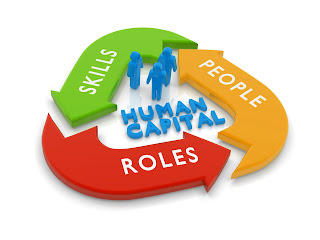One of the more powerful tools for capturing the characteristics behind critical functions is the Competency Model. Not only does the Competency Model neatly organize success factors behind a position, but it also describes the behavior needed for maximum performance. Competency models can represent a key component for building an overall HR System. For example, we can use competency models for applying the same standards throughout the company. This helps reduce bias and unfairness in how we evaluate performance. Competency models also provide some basic benefits:
• Improves the likelihood of hiring the right person
• Provides a baseline for evaluating performance
• Gives insights into the training needs of a position
• Quick checklist of critical job qualities
In order to build a competency model, we should start by looking at past performance that elevated the position, resulting in very high levels of performance. What did this person do to make the position visible, creating value for the company? Try to reflect back on the behavior and actions this person took – special events, critical highlights, and other characteristics of success. What does success look like in this position? Interviewing current and past holders of the job can help. Look for common characteristics. We need to capture these qualities. Some examples might include:
• Flexibility – Able to adapt to sudden changes in the workflow to accommodate customer demands.
• Analytical – Easily applies skills and analytical tools to reach relevant conclusions.
• Team Building – Encourages and works well with others to achieve overall results.
From this baseline, we are able to articulate a model for exceptional performance, giving employees critical insights into what it takes to succeed. Some competencies will cut across several positions, such as similar skills needed for call center personnel, sales force, and marketing managers. However, the best competency models include some distinctions – such as assertive communicator for sales personnel, but friendly and courteous behavior for call center personnel.
A good competency profile is not easy to develop. For example, the best competency models incorporate the values and culture of the organization. Therefore, if someone performs really well in accordance with their respective competency model, then you invariably expect them to be rewarded and recognized within the organization. In reality, people who are rewarded and recognized may not be the highest performers. So make sure your competency models are backup by the reality of the values and culture of the company.
Finally, the best forms of competencies (knowledge, skills, etc.) tend to be behaviors. Behaviors are easier to grasp and understand. Employees tend to identify with acceptable behaviors as opposed to improving their skill sets. Once employees have reach behavioral thresholds, then move to higher skills such as leadership to drive long-term employee performance.
"Competency models are a means of ensuring that your investment in your people supports the achievement of strategic goals. The popularity of competency modeling is steadily increasing: human resource professionals and line managers everywhere are now using competency models to make wise decisions about selection and placement, as well as training and development and performance management.”
- The Art and Science of Competency Models by Anntoinette D. Lucia and Richard Lepsinger

No comments:
Post a Comment
Note: Only a member of this blog may post a comment.